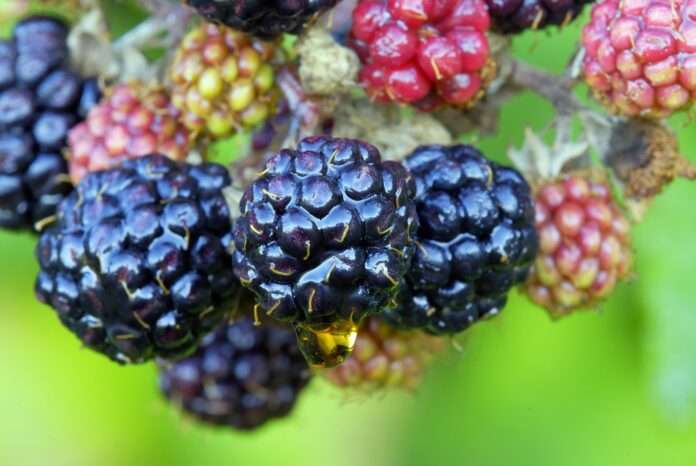Odisha, a state adorned with a plethora of bio-resources, stands as a testament to the richness of its 63 tribal groups, including 11 primitive tribes. Within the folds of these communities lies a repository of invaluable scientific knowledge rooted in the natural bio-resources, serving as a nutritional lifeline for the population.
Table of Contents
Biodiversity’s Role in Nutritional Security
The biodiversity of Odisha unfolds a narrative where indigenous fruits, plucked from the embrace of wild species, play a pivotal role in ensuring the food and nutritional security of rural poor and indigenous communities. Remarkably, certain wild fruits have been singled out for their superior nutritional value compared to their cultivated counterparts.
Tropical Climate and Abundant Flora
Odisha’s tropical climate becomes a nurturing force, contributing significantly to its lush flora and diverse ecosystem. Among the estimated 2800 species of vascular plants, approximately 150 wild edible fruit species thrive in the deciduous forests of eastern India. These fruits, jewels of nature, find their way into the lives of rural communities in various quantities.
Harvesting Nature’s Bounty

The gathering of wild edible species is an age-old practice, predominantly undertaken by forest dwellers, indigenous communities, and other marginalized rural groups. What begins as a means of home consumption transcends into a source of livelihood, as these treasures fetch commendable prices in the market.
Cultural, Social, and Economic Significance
Beyond their importance as a nutritional source and income generator, the diversity of indigenous fruits carries profound cultural and social value. These fruits, with their unique flavors and properties, contribute to the stability of ecosystems, forming an integral part of the intricate web of nature.
Challenges Amidst Modernization
However, the cultivation of minor fruits faces limitations, confined to specific areas without undergoing a conscious phase of domestication. The resilience of minor fruit species to various stresses makes them ideal for cultivation in disaster and drought-prone regions. Yet, rapid modernization, fueled by GDP-based development, has eroded the traditional knowledge associated with wild crops.
Balancing Tradition and Market Demands
The majority of fruit crops, driven by market demand, often deviate from traditional cultural preferences and agro-ecological conditions. An increased supply of minor fruits, serving as raw material for Ayurvedic medicine and food processing, could catapult these lesser-known fruit crops into popularity.
The Dual Dependence on Forest Resources
While a significant portion of the population relies on agricultural practices for sustenance, a substantial segment turns to forests and forest products. Wild vegetables and other forest delicacies become essential components of their nutritional intake, showcasing the intricate interdependence between communities and their natural surroundings.
The Untapped Potential of Wild Fruit Tree Farming
Despite possessing extensive knowledge of indigenous fruits, these communities have yet to fully embrace wild fruit tree farming. This untapped potential represents a missed opportunity to elevate food security, enhance nutrition, and boost income within indigenous communities.
Harnessing Nature’s Pharmacy
In the realm of medicinal discoveries, plants emerge as invaluable sources of drugs. The indigenous communities of Odisha hold a treasure trove of information, relying on natural bio-resources for 25-50% of their annual food requirements. About 150 wild edible fruit species become not just sustenance but also cater to commercial needs.
Antioxidant Riches of Wild Edible Fruits
The wild edible fruits, rich in free radical scavenging molecules like polyphenols, phenols, flavonoids, steroids, and dietary glutathione, provide a natural defense against harmful free radicals. Notable antioxidants like tocopherols (Vitamin E), ascorbic acid (Vitamin C), and rosemary extract contribute to the detoxification of the organism.
Preserving Nature’s Balance
The harmful actions of free radicals find a formidable opponent in antioxidants, creating a delicate but essential balance within the organism. As these compounds scavenge free radicals, they play a vital role in detoxification, ensuring the well-being of those who consume these nutritional treasures.
In the heart of Odisha’s wilderness, the intertwining tales of biodiversity, indigenous wisdom, and the nutritional dance of wild fruits unfold. It’s a story of balance, resilience, and the harmonious coexistence of nature and humanity.
Tribal Harmony with Forest Ecosystem

In the heart of Odisha’s forest ecosystem, the tribal population thrives with its unique social-cultural patterns and traditional food practices. The majority of their diet is a mosaic of unconventional foods, ranging from edible flowers, fruits, tubers, leaves, stems, seeds to wild mushrooms. Remarkably, 25-50% of their annual food requirements find sustenance in the diverse offerings of the forest.
Wild Fruits Weaving Culinary Tales
Among the culinary gems that grace the plates of indigenous communities in Odisha, several wild fruits stand out as staples. Amla (Emblica officinalis), Bislambhi (Cucumis trigonus), Gauduni jamun (Syzgium cumini), Khajur (Phoenix sylvestris), Ban karaila (Momordica dioica), Ban kundri (Melothria dioica), and Terrel (Diospyros melanoxylon) paint a vibrant palette of flavors and nutrients.
Medicinal Marvels Amongst the Foliage
Beyond their culinary appeal, certain wild fruits in Odisha are recognized for their rich content of antioxidants and medicinal properties. Annona reticulate, Baccauria sapida, Euphorbia longan, Meyna laxiflora, Prunus armeniaca, Sterculia villosa, and Ziziphus mauritiana contribute not just to taste but also to the health and well-being of those who partake in nature’s pharmacy.
Major Groups of Fruits with Antioxidant Riches

Odisha’s treasure trove of fruits extends beyond the culinary spectrum, with a focus on antioxidant-rich varieties. These fruits are not merely sustenance; they are a source of vitality and well-being.
Diverse Antioxidant-Rich Fruits in Odisha
- Bael (Aagle marmelos): Known for its refreshing taste, Bael brings not just flavor but also antioxidants to the table.
- Boro koli (Ziziphus mauritiana): A small yet potent fruit, Boro koli packs a punch with its antioxidant properties.
- Baula (Mimusops elengi): A unique addition to the list, Baula brings its distinct flavor and antioxidants to the gastronomic experience.
- Bheji baigana (Solanum torvum): This fruit, with its nutritional content, adds both substance and health benefits.
- Ghunti (Gardenia gummifera): Beyond its culinary appeal, Ghunti contributes to the antioxidant richness of Odisha’s fruit offerings.
- Kantai koli (Ziziphus oenoplia): This fruit not only tantalizes taste buds but also serves as a source of antioxidants.
- Kashiphal (Bridelia retusa): Known for its versatility, Kashiphal brings both flavor and antioxidant goodness to the table.
- Khajur (Phoenix sylvestrix): A classic among wild fruits, Khajur combines taste with antioxidant benefits.
- Kowa/ Sarbora (Garcinia cowa): This lesser-known fruit adds diversity to the antioxidant-rich repertoire of Odisha.
- Lata kasi (Bridelia tomentosa): With its unique properties, Lata kasi contributes to the multifaceted benefits of indigenous fruits.
- Lawa/ Dimiri (Ficus glomerata): A distinctive addition, Lawa/Dimiri enriches the culinary and nutritional landscape.
- Mehel (Eriolobus indica): Known for its nutritional content, Mehel adds depth to the indigenous fruit offerings in Odisha.
- Nara koli (Phyllanthus acidus): With its tart flavor, Nara koli brings a refreshing twist to the antioxidant ensemble.
- Rai (Dillenia pentagyna): Rai not only excites the taste buds but also contributes to the antioxidant richness of the region.
- Kendu/ Terrel (Diospyros melanoxylon): With its versatile uses, Kendu/Terrel stands as a testament to the diversity of Odisha’s wild fruits.
- Tunda/ Poda koli (Toddalia asiatica): This unique addition adds both flavor and antioxidant properties to the culinary mix.
- Sapota (Ziziphus rugusa): Closing the list, Sapota contributes its unique taste and nutritional benefits to Odisha’s indigenous fruit offerings.
Preserving the Culinary and Medicinal Heritage
As we traverse the rich landscapes of Odisha’s indigenous fruit crops, it becomes apparent that these fruits are not just culinary delights but also bearers of cultural heritage, biodiversity, and medicinal marvels. The vibrant tapestry of flavors, nutrients, and antioxidants weaves a story of sustainable coexistence between the tribal communities and the bountiful forests of Odisha.
Ingrained Vitality of Fruits in Human Diet

As we delve into the heart of dietary essentials, it becomes evident that fruits are not just a supplement but a vital portion of an adequate diet. Their role extends beyond mere sustenance; they serve as appetizers and bring a symphony of flavors to the table. Throughout history, edible wild fruits have been a cornerstone in supplementing the human diet, weaving their way into the culinary fabric of societies.
Read more: Wild Food Plants (WFPs) – A Key Component To Ensure Food And Nutritional Security
Ancient Legacy of Edible Wild Fruits
The roots of the importance of wild fruits run deep, echoing through ancient times. The fruits, seeds, and leaves of numerous wild plants have seamlessly integrated into a variety of traditional native dishes, contributing both flavor and nutritional richness to culinary practices.
Guardians Against Malnutrition
In the perpetual struggle against malnutrition and related dietary problems, wild edible fruits emerge as stalwart guardians. Especially during critical periods, such as off seasons in agriculture, these fruits become a beacon of nutrition for indigenous communities and the rural populace of Odisha, offering a vital source of sustenance.
Multifaceted Contributions of Wild Fruits
Beyond the realm of nutrition, wild fruits bring forth a plethora of contributions to human well-being. They not only provide essential vitamins but also impart distinctive flavors and compounds that hold nutritional, gastronomic, and social significance.
Alkaloids, Essential Oils, and Phenolics: Nature’s Gift to Health
Wild fruits house a treasure trove of alkaloids, essential oils, and phenolics derived from secondary metabolism. These elements fulfill the highly essential dietary requirements of the body, acting as natural guardians of health. The unique blend of these compounds contributes not just to nutrition but also to the sensory experience of the culinary journey.
Protein, Carbohydrates, and Valuable Minerals: The Nutritional Symphony
Functioning as a rich source of proteins, carbohydrates, vitamins, and other valuable mineral substances, wild fruits present a nutritional symphony. Their potential as a food source goes beyond mere sustenance, offering a holistic package of essential nutrients.
Antioxidant Riches: Nature’s Defense Mechanism
The abundance of natural phenolic compounds within wild fruits bestows upon them high antioxidant properties. These compounds, crucial in combating free radicals, act as a natural defense mechanism for the body. However, the commercial application of these compounds in foods faces limitations, demanding rigorous proof of safety for widespread use.
Balancing Act: Commercial Viability and Safety Requirements
While hundreds of natural phenolic compounds boast impressive antioxidant properties, their application in foods is tempered by safety requirements. Commercial viability hinges on meeting stringent safety standards, limiting the adoption of these compounds in a broader culinary context. Nevertheless, the potential remains, predominantly sourced from fruits, vegetables, spices, grains, and herbs.
A Culinary Tapestry of Health and Flavor
In the grand tapestry of dietary essentials, wild fruits stand as vibrant threads, weaving together health, flavor, and cultural significance. From ancient times to the present, these fruits have played a pivotal role in supplementing human diets, providing not only sustenance but also a symphony of tastes. As we navigate the delicate balance between commercial application and safety, the culinary and nutritional legacy of wild fruits continues to flourish, offering a taste of nature’s bounty to those who partake in its richness.


